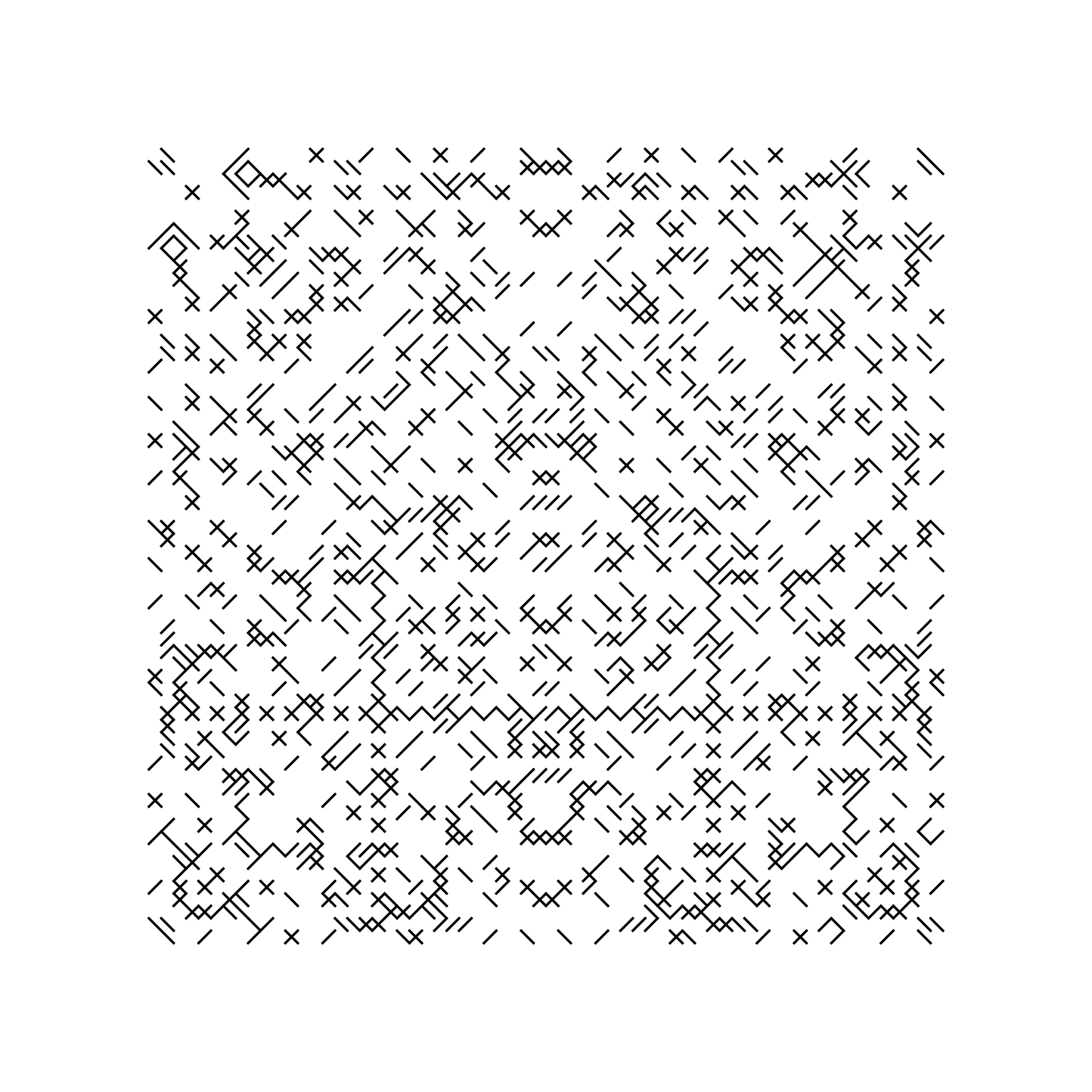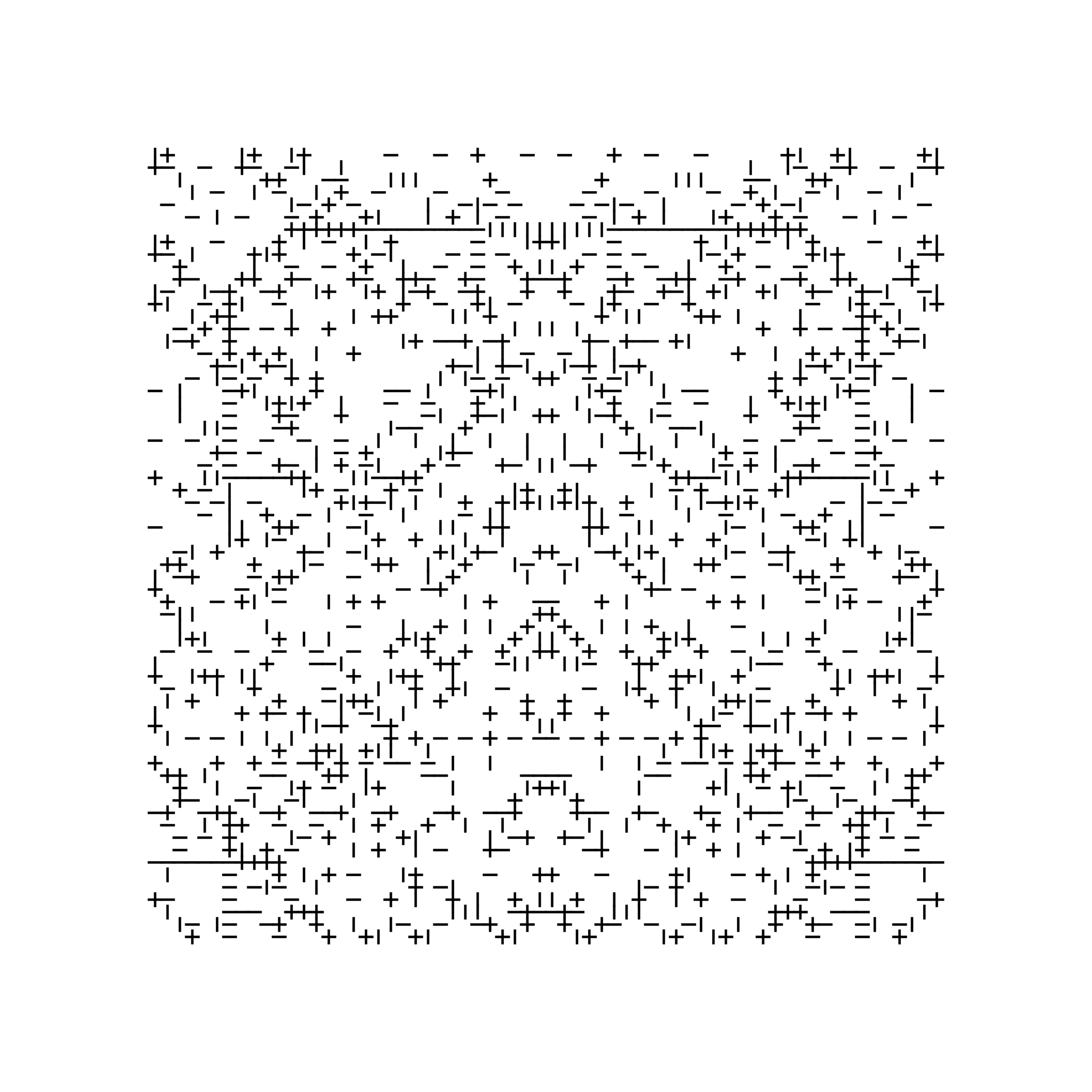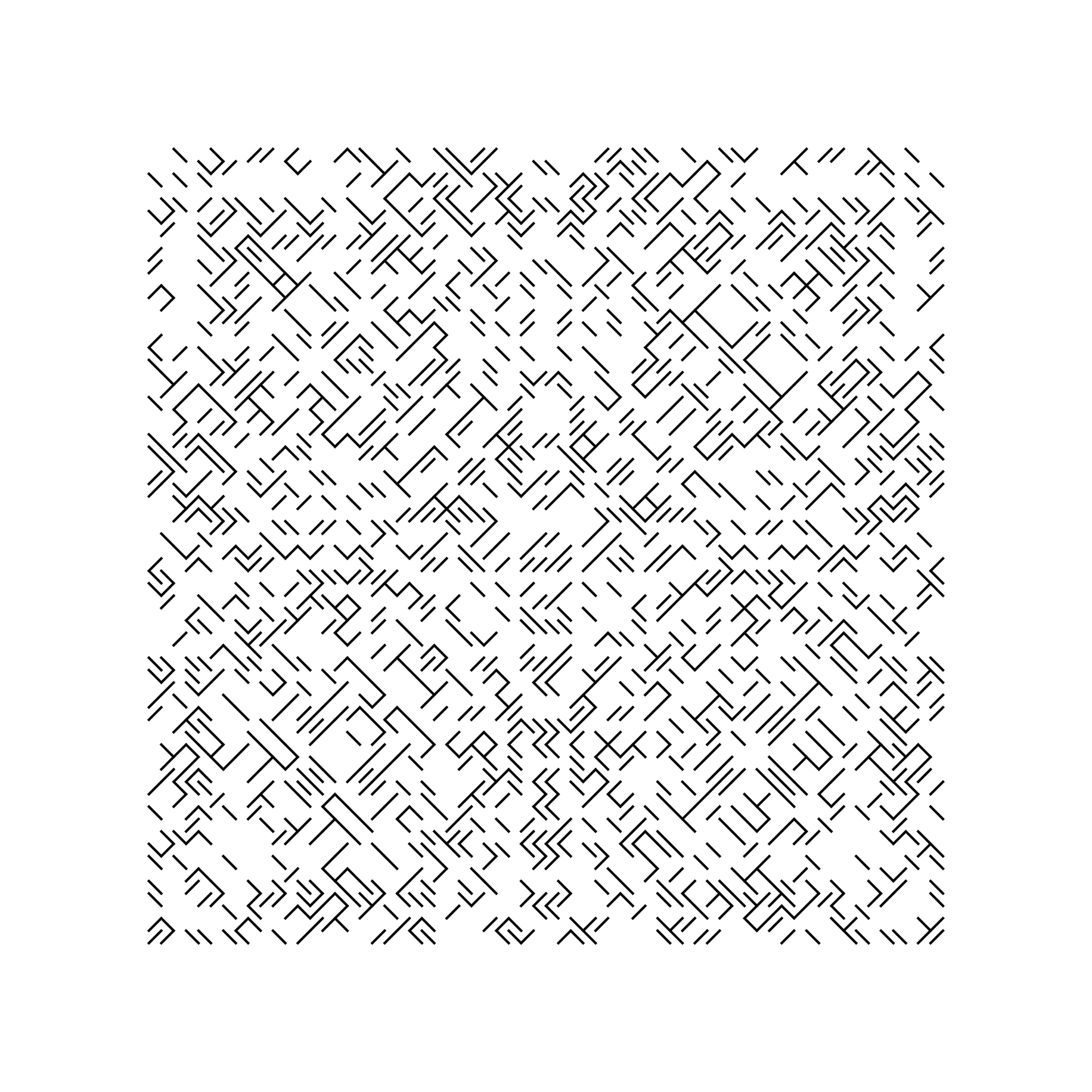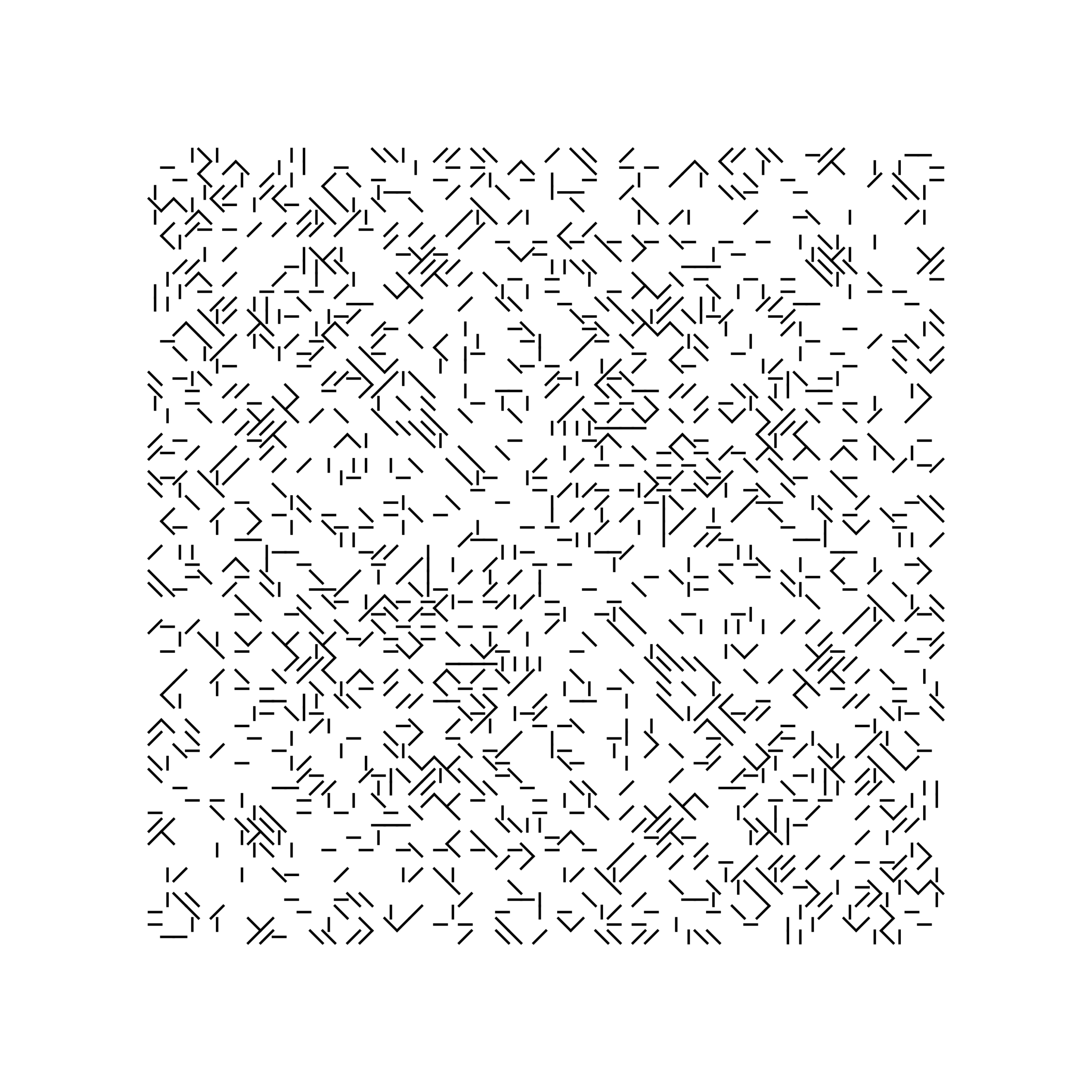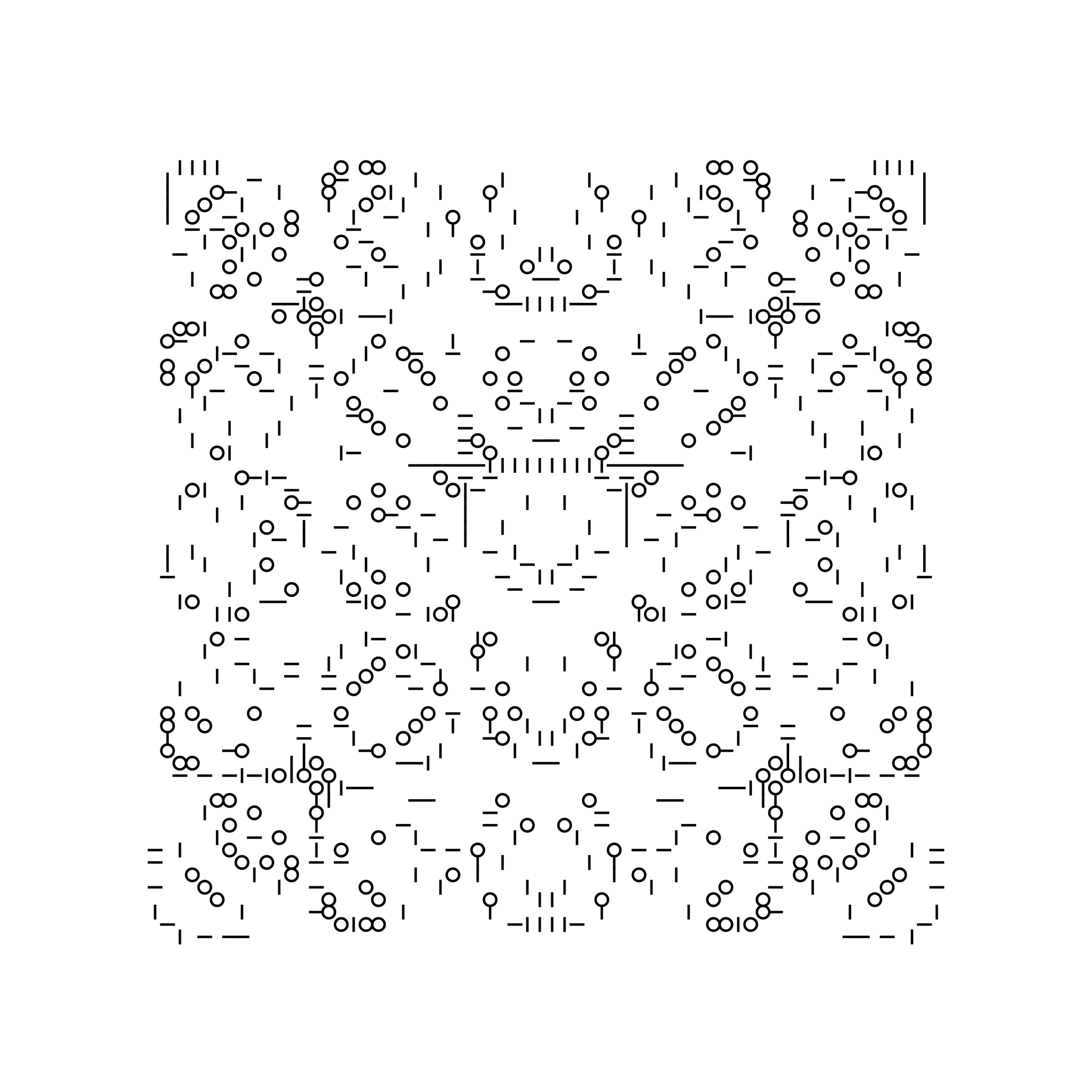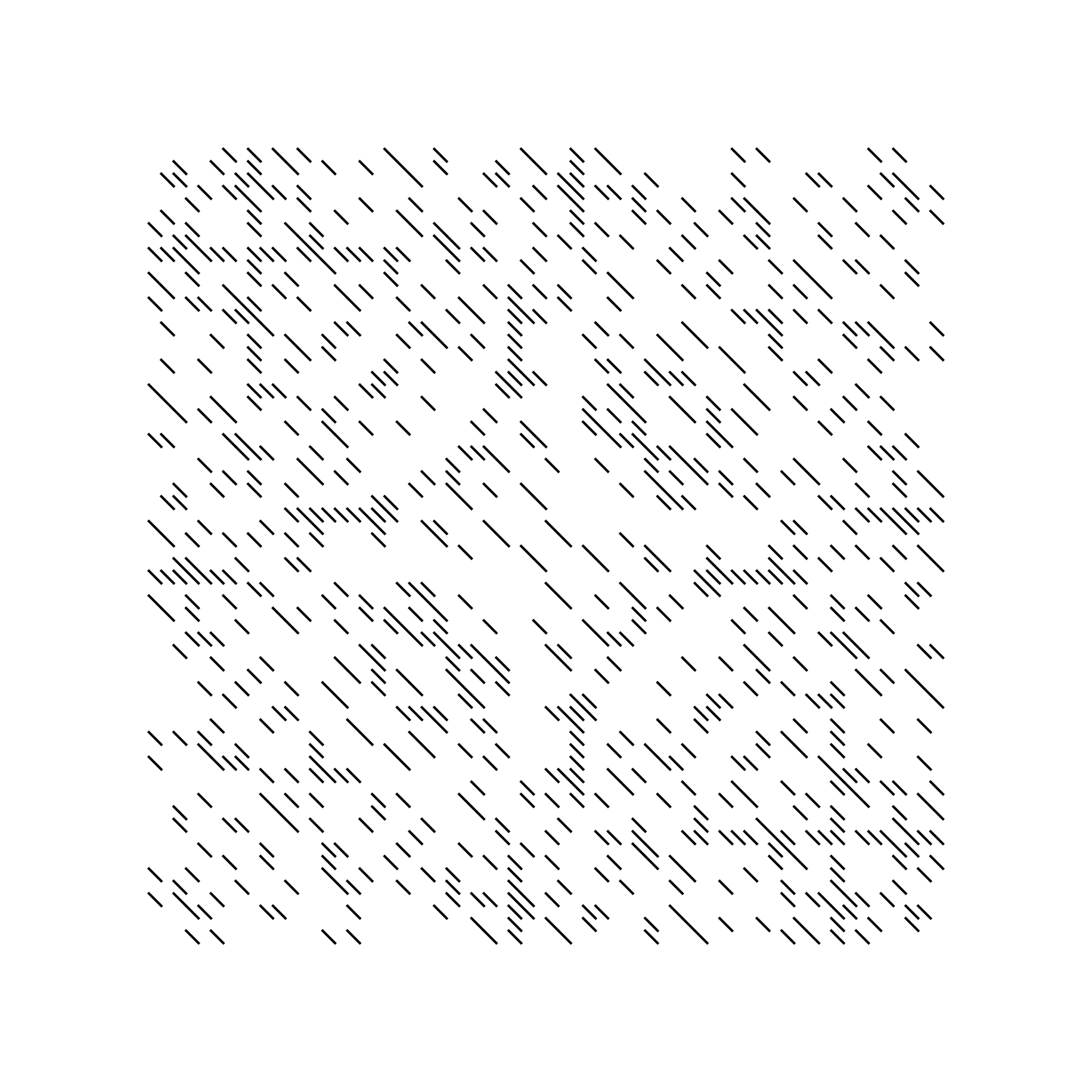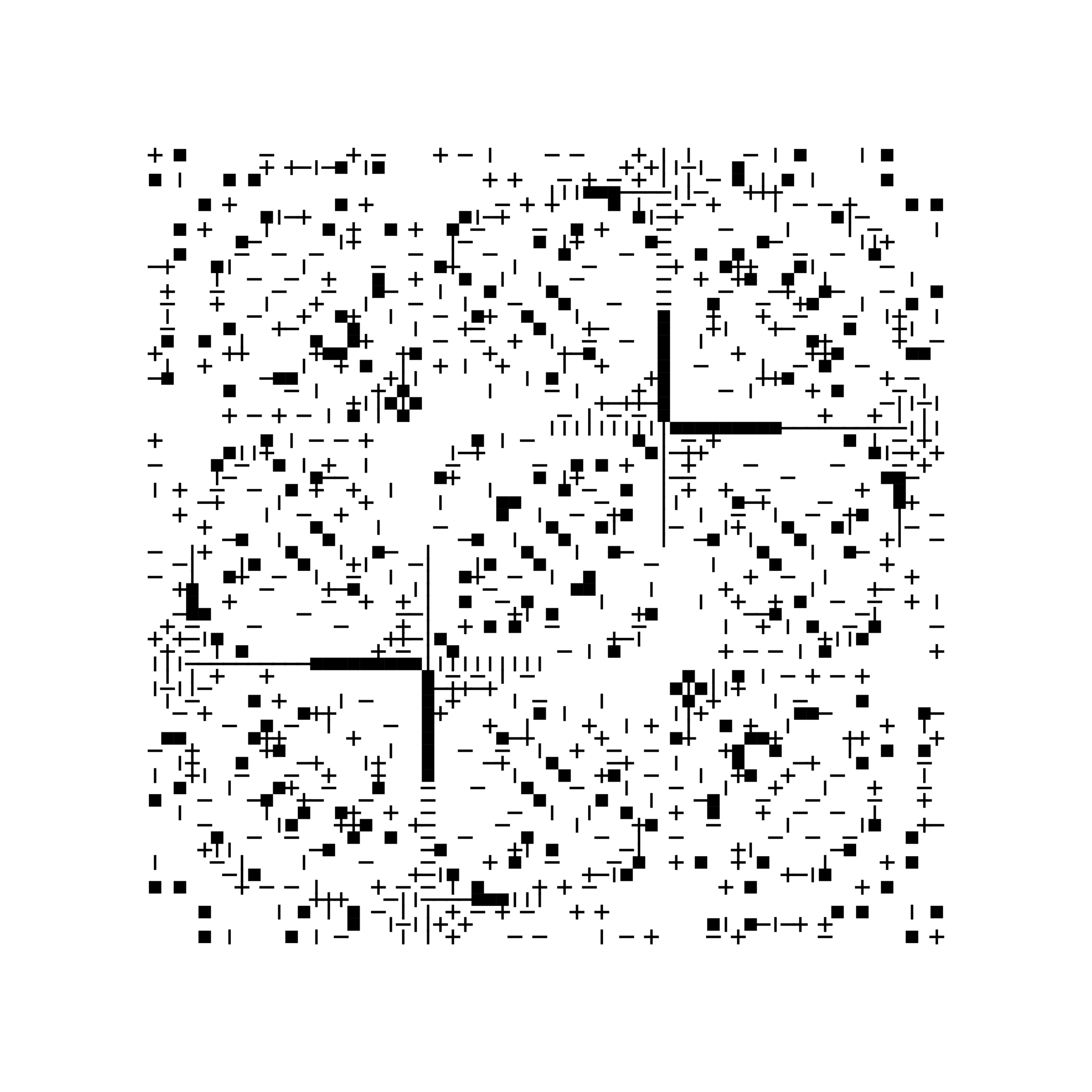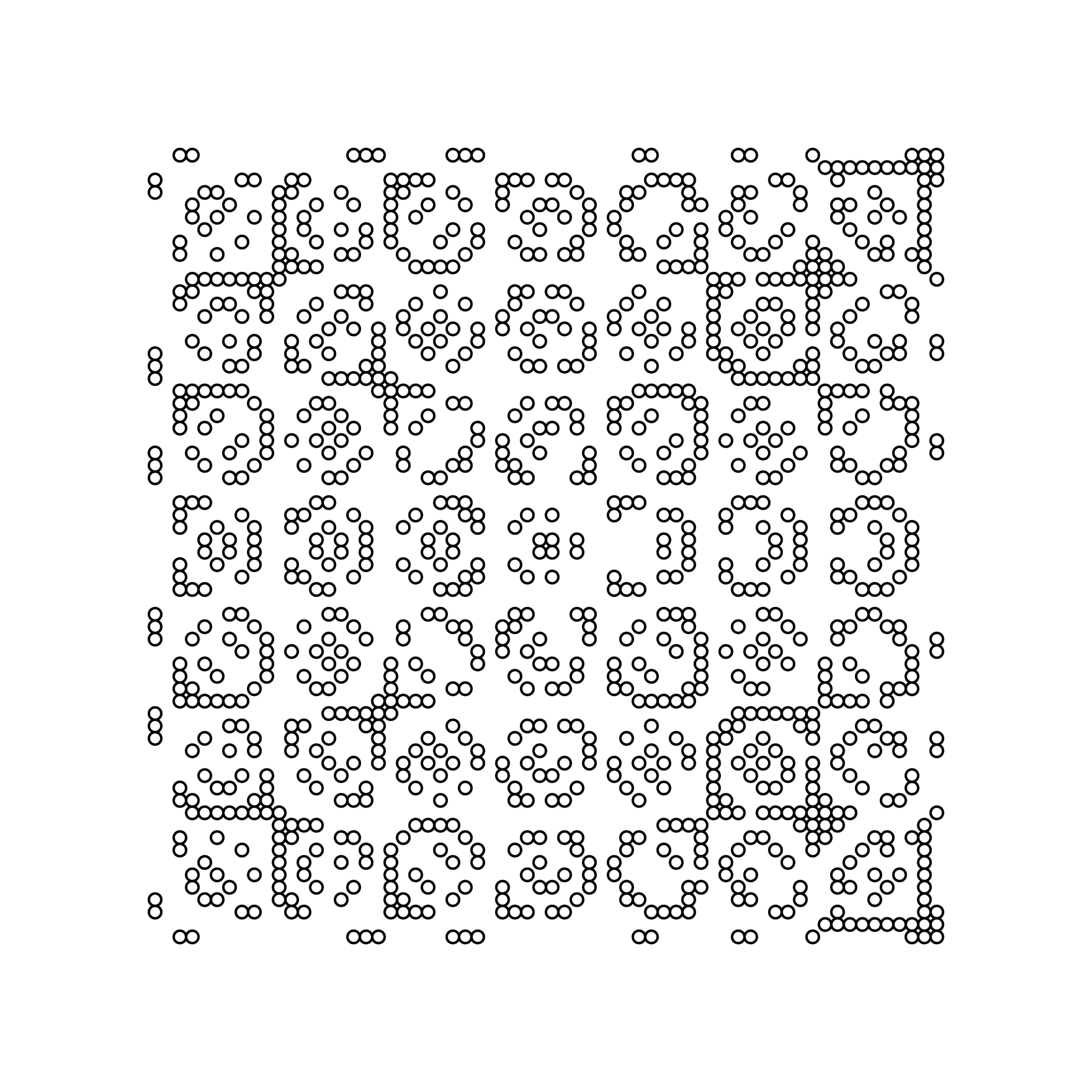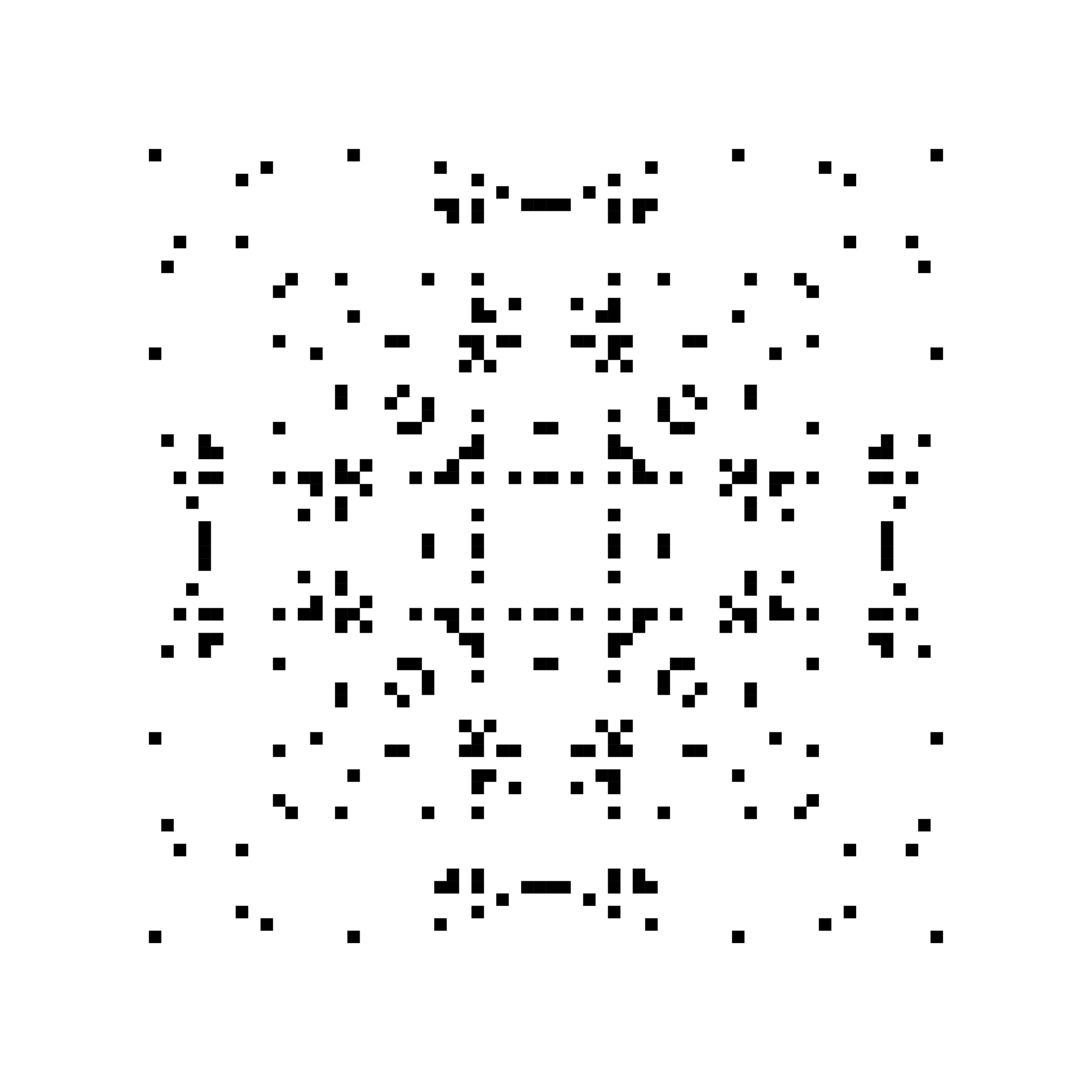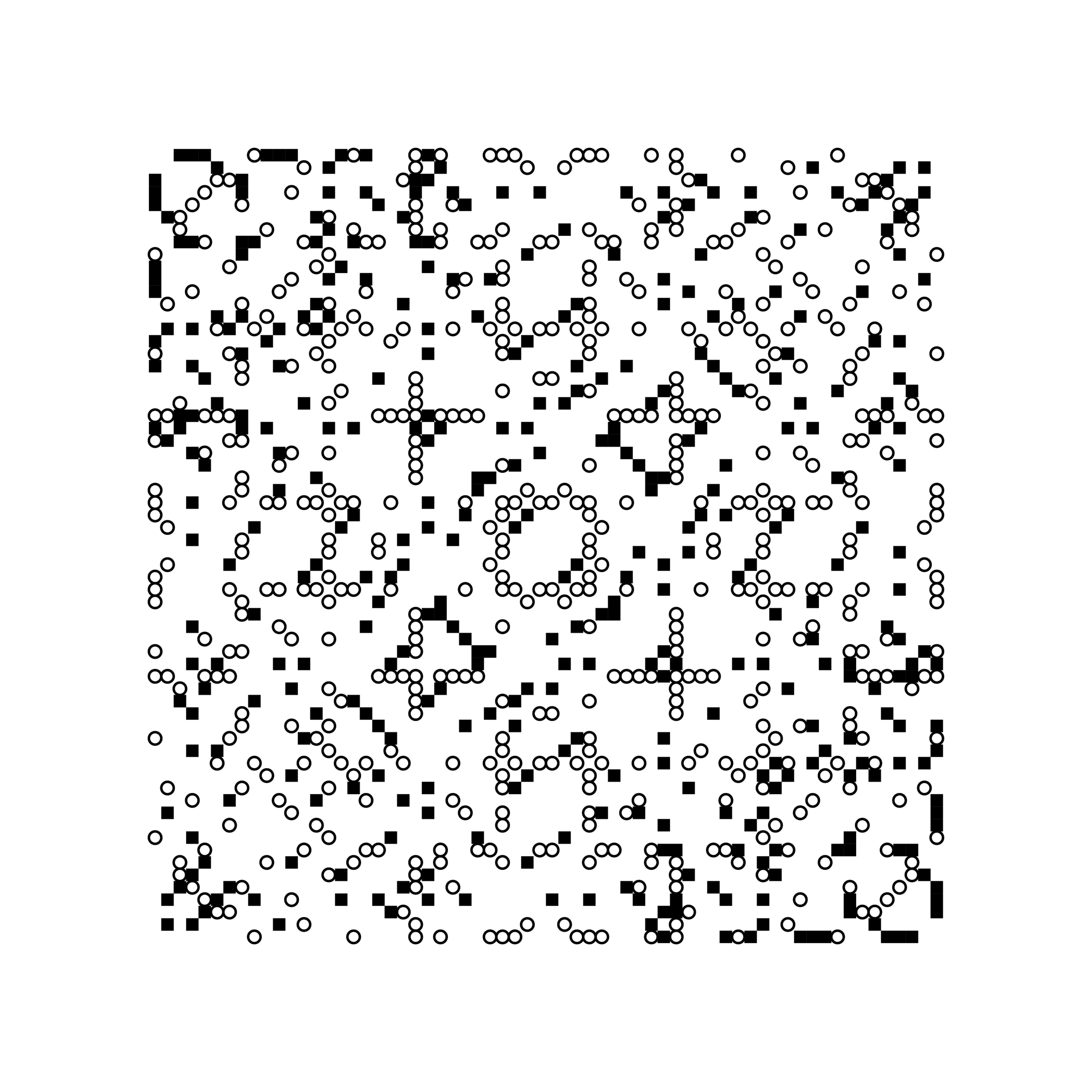
Autoglyph #484
On-chain algorithm, NFT, and Ethereum blockchain, 2019
Private collection
Autoglyphs is a series of 512 unique drawings composed of intricate, text-based geometric patterns. Matt Hall and John Watkinson of Larva Labs created the code to generate this work and a custom font to render the glyphs (symbols). Each image was generated only when a collector “minted” (collected) the work. No one—not even Larva Labs—knew what a specific Autoglyph would look like until it was made, reflecting the balance between chance and control inherent in generative processes.
Autoglyphs demonstrated that it was possible to create and store generative art directly on the blockchain, without the need for external databases to host the image files. Autoglyphs are generated “on-chain”: The code used to produce the images is embedded directly into the Ethereum blockchain. This means that the artwork is permanent, unchangeable, and decentralized, ensuring its preservation and ownership are independent of any single platform. Autoglyphs proved blockchains could be used as a medium for artistic experimentation.
The process of creating and registering a new digital asset, such as an NFT (non-fungible token) or cryptocurrency token, on a blockchain network. It transforms digital content into a verified, tradeable item with recorded ownership, similar to how traditional mints produce physical coins or currency.
A digital ledger that stores information across many computers instead of one central location. Each new record links to previous ones, forming a secure chain of “blocks” (packages of encrypted data) that is extremely difficult to alter or hack. Blockchain technology has been used to create cryptocurrencies and non-fungible tokens (NFTs) due to its ability to securely record transactions without requiring the authentication of a centralized regulatory body.
Data, transactions, or activities that are recorded directly on a blockchain network. This information is permanently stored, publicly verifiable, and cannot be altered, as opposed to “off-chain” data, which exists outside the blockchain but may reference or connect to it.
Spread out rather than concentrated in one place. In decentralized systems, control, power, and decision-making are distributed among many participants or nodes rather than managed by a single, central authority.
